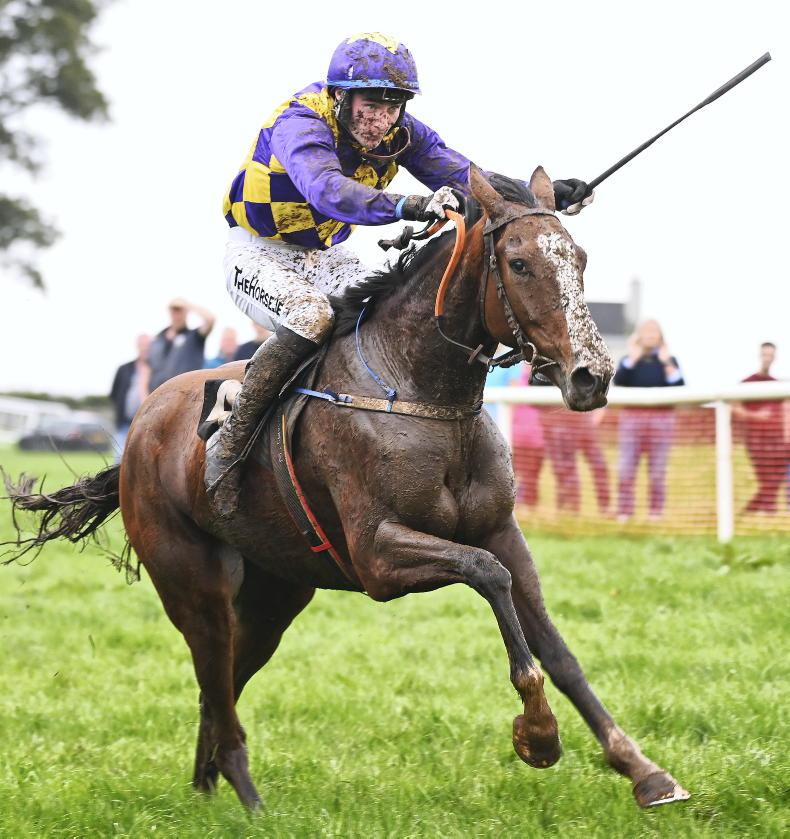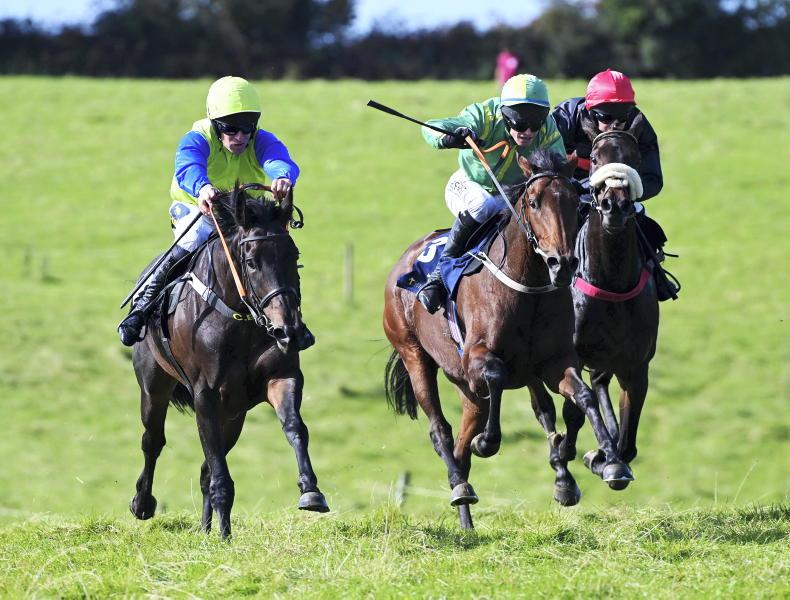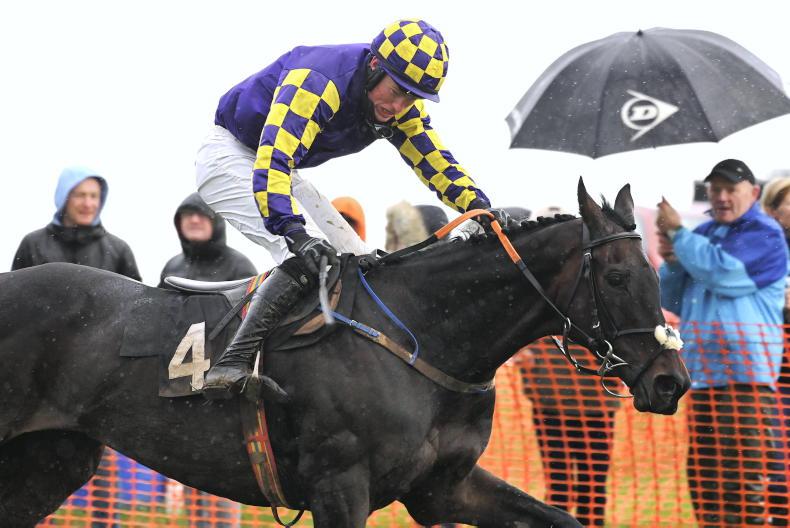THE new season steps up a gear this weekend as the fourth weekend of the season brings the first weekend to feature three fixtures, and this afternoon’s fixture at Loughanmore has also produced the biggest entry of the season.
With 101 entries it is the first fixture of the new season to break the 100 entry mark, mirroring the opening weeks of last season, and encouragingly entry numbers for the first eight fixtures of this season are up slightly on last year, driven in a significant part due to the continued strength of the four-year-old maiden division.
That force within the four-year-old age group has been all the more important this year due to the underwhelming turnout within the five-year-old and upwards mares’ maiden category which has been disappointingly light on numbers across the opening weekends of the season.
Nine mares were entered for the five and six-year-old mares’ maiden race at Castletown-Geoghegan on the opening weekend of the season to produce a field of seven come race day.
Since then, the numbers have slipped in the wrong direction and fallen across the last two weekends, with just seven horses entered at Toomebridge and six at Loughrea for what were two five-year-old and upwards mares’ maiden races.
That trend continued last weekend, with six entries at Portrush and five horses entered for a five-year-old only mares’ maiden at Tinahely.
Sub-par entries
The net effect of these sub-par entries has been two consecutive weekends of small fields in the division, with only five runners at Loughrea, and only four runners in the three such maiden races at Toomebridge, Portrush and most recently at Tinahely last Sunday.
The hunter certificate numbers show how the age breakdown of mares now almost exactly mirrors the overall picture in point-to-pointing at present, where four-year-olds are so dominant.
As of the beginning of the week, 228 mares held a hunter certificate, with over half of them now being accounted for by four-year-olds, which leaves just 103 mares aged five or older currently holding a hunter certificate.
When these 103 horses are spread out across five-year-old and upwards maidens, older maidens, mares’ winners’ races and mares’ open contests, it is therefore no surprise that the numbers are currently so thin.
Encouragingly, this weekend’s entries in the five-year-old and upwards mares’ maiden division have picked up slightly from the disappointing numbers of recent weeks, raising hopes that the four-runner fields of late in the division will be left behind in the weeks and months to come.
However, it is surprising that more trainers have not sought to take advantage of such opportunities with track handicapped mares who may still remain a maiden.
Fifteen or more leads to maiden divide
TWELVE months ago it was not until Lingstown in late November that the first divided race of the season occurred.
It could well be something that crops earlier and more frequently, with the maximum number of runners permitted in a point-to-point race having been reduced for this season.
Four-year-old maiden races will now be divided if more than 15 horses are declared, with races confined to novice riders also having the same maximum number of runners.
No more than 17 runners will be permitted in all other point-to-point races and those maximum numbers can in some circumstances be reduced further following a track inspection by the course inspector.
The reduction in the maximum field size this year has been introduced following feedback that the Stewards of the Irish National Hunt Steeplechase Committee (INHSC) received from both riders and handlers alike at the review meeting held following the completion of last season.
The move certainly has to be welcomed when you consider that the maximum field size for tomorrow’s Munster National, a race which will feature seasoned handicappers with plenty of experience over fences, is 16 and has been for well over a decade. Whereas, in the likes of four-year-old maiden races you can often have a field full of unraced young horses running in a competitive race for the first time.
Under rules, the maximum number of runners in races varies from course to course depending on their individual circumstances, and you would hope that following this wholesale reduction in field sizes for point-to-points, the IHRB can work through similar course specific field sizes in the pointing sphere. Particularly as the nature and characteristics of point-to-point courses varies significantly.
Point-to-point ratings
IT was a weekend of big-name defeats in the open division last week with Jay Bee Why (111+) the first to strike at Portrush as he lowered the colours of top hunter chaser Vaucelet on his seasonal re-appearance. Warren Ewing’s victor jumped particularly swiftly for a horse that had failed to win in three novice chase attempts two years earlier, and his triumph came in a small-field race where the first three look likely to be strong players in the division.
It was a much larger field that Focus Point (114+) had to overcome with an excellent turnout at Tinahely for a race that featured a notable cast of new recruits to the division from the track, including Fakir D’Alene, Ramillies and Freewheelin Dylan.
He improved throughout last season and has clearly continued in that vein. A first track success in a maiden hunter chase is surely on the cards this season. In the younger age division, Juarncon (93+) may have allowed his chief rivals to close by steadying into the last in difficult conditions, but he had plenty left as he picked up after the last to win well. The four-year-old maiden in Tinahely was a closely-run affair, with the always prominent Justatan (91+) deserving of praise for a first-time out success.


 This is a subscriber-only article
This is a subscriber-only article
 It looks like you're browsing in private mode
It looks like you're browsing in private mode







SHARING OPTIONS: